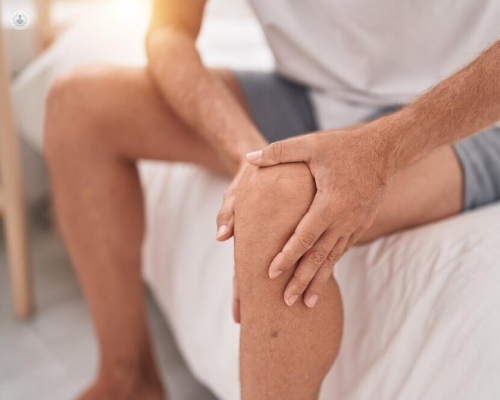Meniscus matters: why this tiny cushion in your knee is so important
Written in association with:The meniscus is a crucial structure in the knee joint that acts as a shock absorber, helping to distribute weight and protect the cartilage. Injuries to the meniscus are common, especially among athletes, but can also occur from simple daily activities.
An orthopaedic surgeon explains why this small piece of cartilage is essential for knee function and what options are available if it becomes damaged.

What is the meniscus?
The meniscus is a C-shaped piece of cartilage located between the thigh bone (femur) and the shin bone (tibia) in the knee joint. Each knee has two menisci—one on the inside (medial) and one on the outside (lateral). These act as shock absorbers and help to distribute pressure evenly across the knee joint, ensuring smooth movement and protecting the underlying cartilage.
How do meniscus injuries occur?
Meniscus injuries can occur due to various reasons, including:
- Twisting movements: sudden twisting of the knee, often seen in sports like football or basketball, can cause a tear.
- Ageing: as we age, the meniscus becomes more prone to degeneration, making it more susceptible to injury from even minor activities.
- Trauma: a direct blow to the knee, such as during a fall or car accident, can also damage the meniscus.
What are the symptoms of a meniscus injury?
Common symptoms of a meniscus injury include:
- Pain: especially when rotating or twisting the knee.
- Swelling: the knee may swell after an injury, although it can take hours or even a day to appear.
- Stiffness: difficulty bending or straightening the knee fully.
- Locking: in severe cases, the knee may lock or become stuck in one position, indicating a more serious tear.
How are meniscus injuries treated?
Treatment for meniscus injuries can vary depending on the severity and location of the tear. Options include:
- Rest and physical therapy: minor tears may heal with rest, ice, and a structured rehabilitation program to restore strength and mobility.
- Surgical repair: in cases where the tear is severe, arthroscopic surgery may be required to repair or remove the damaged portion of the meniscus.
- Meniscus transplant: for some individuals, particularly younger patients, a meniscus transplant may be considered if the damage is too extensive to repair.
Can a damaged meniscus be prevented?
While not all meniscus injuries can be prevented, there are steps you can take to reduce your risk, including:
- Strengthening the muscles around the knee: strong quadriceps and hamstrings can help stabilize the knee joint.
- Proper warm-ups before physical activity: warming up and stretching before exercise can improve flexibility and reduce the risk of injury.
- Avoiding sudden, sharp movements: being mindful of twisting or pivoting motions, especially during sports, can help protect your meniscus.
Concerned about a meniscus injury? Arrange a consultation via his Top Doctors profile.


